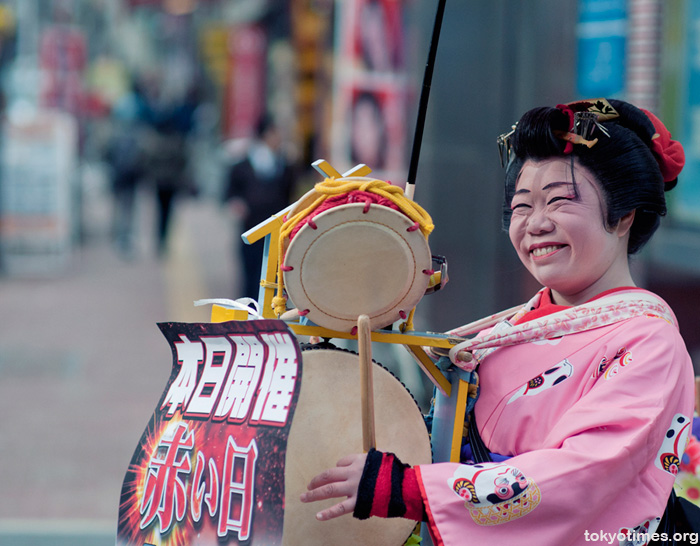It’s impossible to say whether this song was for nobody, somebody or everybody.
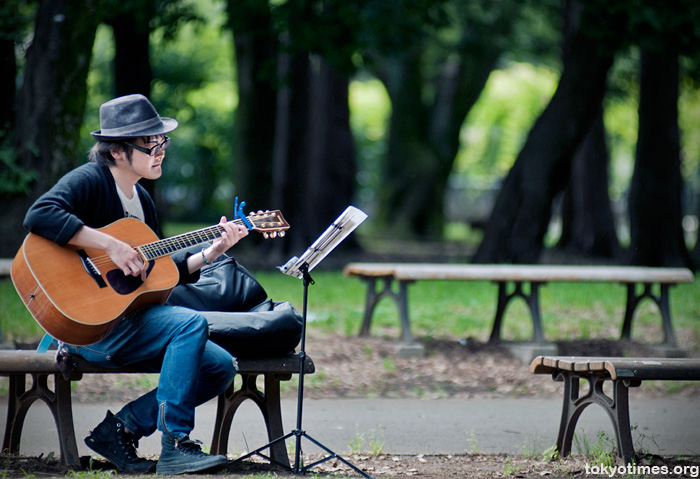
But I for one certainly enjoyed listening to it.
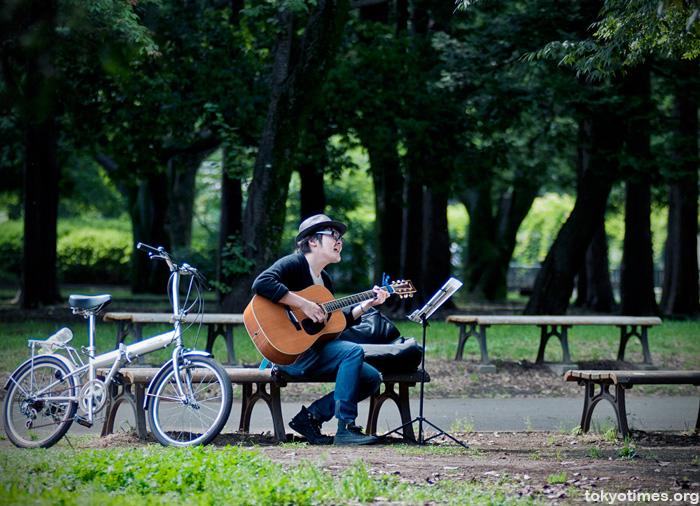
And he definitely enjoyed performing it.
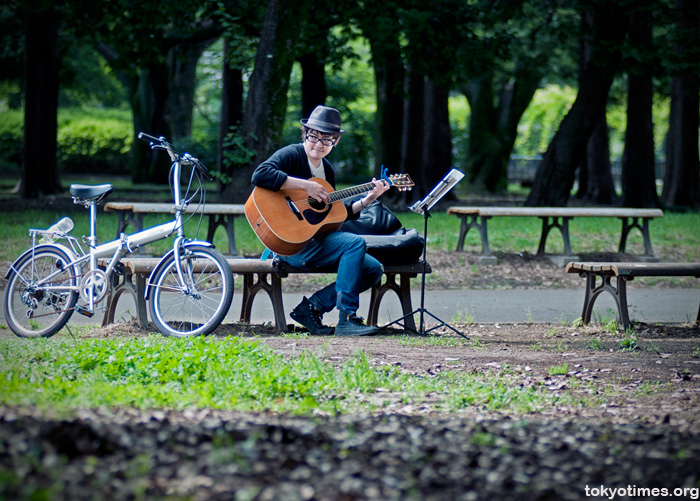
Photographs from a small group of islands
There are plenty of photographs on this site of people playing music in parks, and a big part of why I like taking them is the subject’s obvious contentment: each and every one happily lost in their music, in a lovely location.
But as well as that, it’s also what they provide — which is a soundtrack of sorts. And this fella, playing his flute towards the end of the day, in a quiet area of the park, provided the perfect accompaniment.
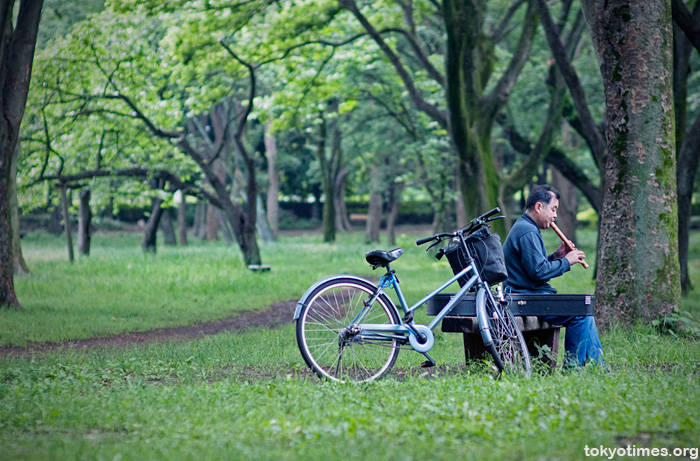
Admittedly it may not quite meet the Quadrophenia quota of mirrors. Or indeed the Mod-based angst of another era. But there is still something suitably moody about this man sat on his scooter. Sullenly staring. In Shinjuku.

Presumably it’s because of an inability to practice at home, where neighbours would likely complain about the noise, but whether that is the actual reason or not, it’s still always nice to see musicians playing in public places.
And the fella photographed below was certainly no different. The sight, and indeed the sounds,
only adding to the simple pleasure of an afternoon spent in the park.
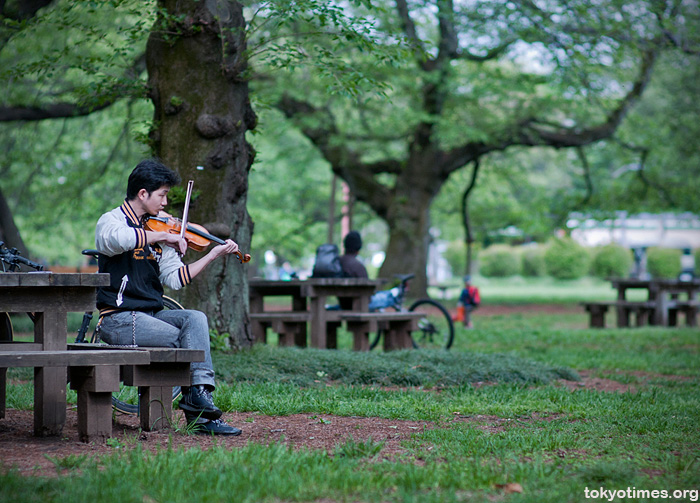
Despite being well aware that the words would be unfathomable, and the story even less clear, I’ve always wanted to attend a Noh performance; the masks in particular, and also the mood created by the torchlight if it’s done traditionally, undoubtedly creating an incredible spectacle. Certainly not one to be easily forgotten, that’s for sure.
Seeing a Noh performer practicing in the sunshine, and sadly sans mask, on the other hand, obviously can’t match such ideals, but nevertheless, it’s still a mesmerising sight.
The moves.
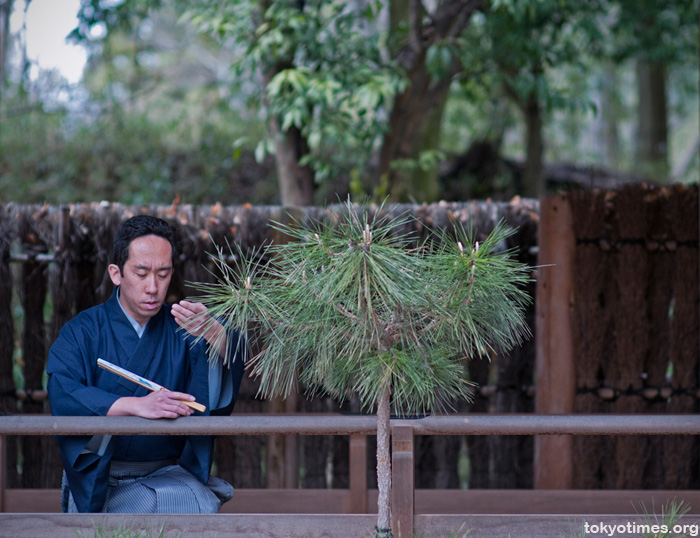
His rather maudlin singing.
Along with the natural elements of the stage.
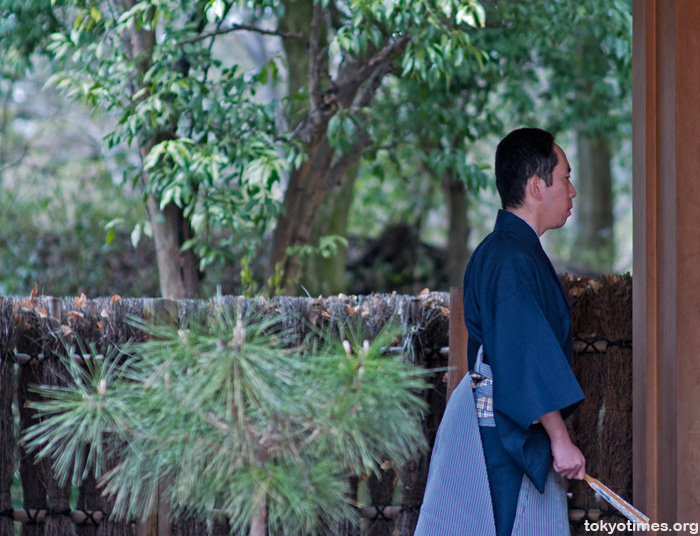
And its natural looking ones.
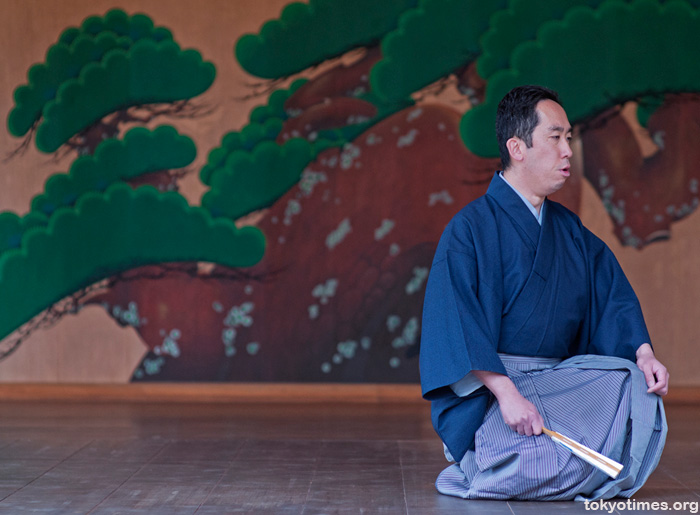
All making for a unique, as well as very private.
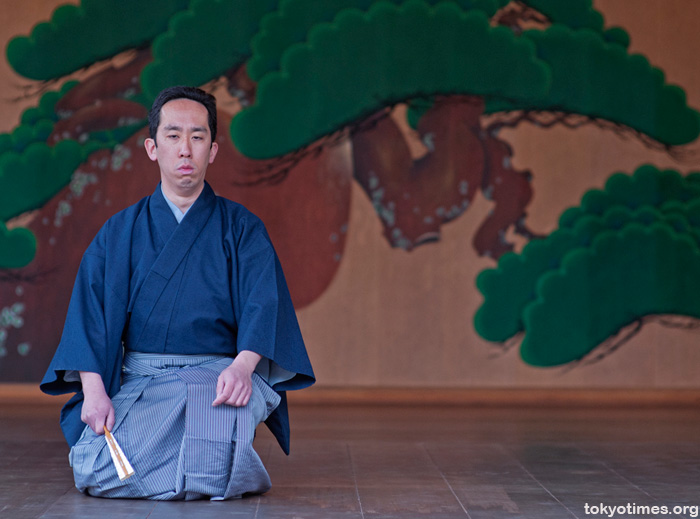
Performance.
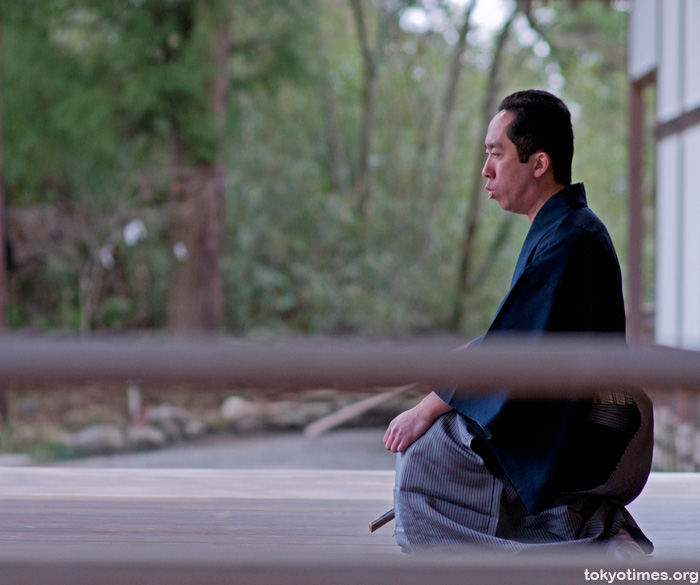
The distribution of leaflets and tissues, or the simple system of simply shouting, are tried and trusted techniques in Tokyo when it comes to promoting new businesses and big sales; both of which, considering how common they are, must result in at least some success.
Gauging the merits of a traditional campaign by a chindonya troupe, on the other hand, is probably much harder, but considering that there are only 30 or so groups still operating in and around Tokyo, it’s probably fair to say that they don’t draw in the customers like they once did back in the day.
Yet regardless of results, with their cheerful demeanor as well as drums, they do at least make for a very welcome change indeed.
